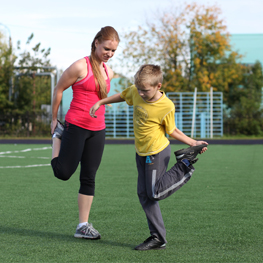
Anxiety is a painful experience. The heightened feeling of stress, worry, nervousness and fear can be relentless and overwhelming. Although each child or adult has a unique experience of anxiety, there are some commonalities. For young people, school is often a source of anxiety. The beginning of a new school year or a transition, such as from home to elementary school, from elementary school to junior high school, from junior high school to senior high school or from senior high school to post-secondary school, typically are points of increased stress.
There are many natural breaks in the school year such as holidays, long weekends and semester changes. Although these breaks can be exciting for many children, any break in structure or interruption to predictability or routine can be unsettling for some and even anxiety-provoking in others. These changes require many adjustments, including meeting new teachers and classmates, and learning new expectations for routine and classroom procedures. Children may also be required to learn new modes of transportation and understand new buildings and neighborhoods.
Knowing the difference between healthy pressure and unhealthy stress is useful for parents. Healthy pressure can be the driving force that helps people get things done. It may involve being flexible, creative, motivated and focused. In contrast, unhealthy stress interferes with a person’s ability to function in their daily life. In school, this may look like increased absenteeism, disengagement or a change in school performance. At home, parents may see increased conflict with their child, avoidance or withdrawal from family, increased illness, poor sleep patterns, changes in mood and neglected hygiene. Children suffering with anxiety may show decreased interest in activities they once enjoyed.
It is helpful to know that the way to manage anxiety is not to resolve all of a person’s stressors. Anxiety is best managed when a person can balance these stressors by caring for themselves. Children look to their parents to learn how to deal with life’s stresses. Modeling calm behavior is a good start to supporting your child. Parents can be mindful themselves of maintaining a routine with regular exercise, eating healthy foods and engaging in positive activities. You can participate in activities, for example, like biking, hiking, walking, drawing, rowing, yoga, hockey, gardening, pottery, painting, climbing, swimming, music, reading, camping, cooking, socializing… the list goes on. Parents and children can do these activities independently or they can do them together.
When a child is fearful of a situation, a parent’s instinct can be to protect the child from discomfort or pain. However, the more something is avoided, the stronger the feeling of anxiety when approaching it again. For example, parents can help their child by supporting regular school attendance rather than allowing school avoidance. If a child describes feeling stressed or anxious, keep communication open. Parents can approach their child in a compassionate, relaxed manner where understanding their child’s perspective is their first goal. It is natural for parents to want to use their life’s experience to solve their child’s problems. From the child’s perspective, jumping to the solution can cause more stress. It is more helpful to support your child in a process of understanding and talking about their anxiety and other feelings. Through this process, the child will be supported in learning how to manage their anxiety themselves and solve their own problems.
Sometimes managing anxiety becomes overwhelming for the child and parent. It is not unusual for a family to access a family physician, teacher, school counselor or psychologist to gain understanding of anxiety if more help is needed. These sources of support can provide new ways of approaching anxiety and managing its symptoms. Anxiety can be a difficult problem but with patience and understanding, it doesn’t have to be a barrier to success and well-being.
For more information about Hull Services, visit hullservices.ca, follow them on Facebook and Twitter @hullcalgary, https://twitter.com/hullcalgary?lang=en.
Calgary’s Child Magazine © 2024 Calgary’s Child